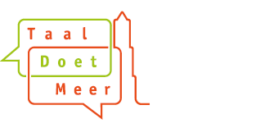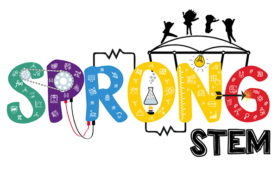Recommendations for designing diverse linguistic landscapes at schools: Input from our research partners in Sweden
A linguistic landscape or ‘schoolscape’ is composed by all signs and objects visible in a school that contain text in one or more language/s. For example, in many multilingual classrooms, using welcome signs in different languages is common. According to Hanna and Ylva, two master students who investigated the use of linguistic landscapes in Sweden, diverse linguistic landscapes can promote a sense of belonging in children as well as play a positive role in their learning (Knaevelsrud & Palmér, 2024). But what should one take into account when designing a diverse linguistic landscape for it to fulfill this potential? Here are their recommendations.
- Involve the students (and their parents) in the design of the linguistic landscape
“…it is particularly powerful when students are actively involved in shaping the linguistic landscape themselves. If their texts, pictures and ways of expression are visible, the result is more likely to feel authentic. Moreover, this can open up valuable conversations about language, culture, and identity among students—potentially building mutual understanding and intercultural awareness across linguistic groups. Even parents may feel a greater connection to the school when their languages are visible and appreciated in an academic setting.” 
- Update the linguistic landscape regularly
“If the landscape is not continuously adjusted to the students’ languages, there is a risk of implicit language hierarchies—where some languages are more visible, more ‘acceptable’, or treated with more prestige than others. For a linguistic landscape to be truly inclusive, it needs to be carefully and regularly updated, ensuring that all students feel seen and represented. Without this care, the landscape might reinforce exclusion rather than prevent it.”
- The linguistic landscape should be aligned with the school’s language policy
“In some cases, linguistic diversity can be reduced to a visual display rather than an integrated part of school life. If the school’s linguistic environment visually communicates inclusion, but students are simultaneously discouraged from speaking their home languages in practice, the purpose of the landscape is undermined.”
- The linguistic landscape must serve a pedagogical function
“If languages are added to the landscape of the classroom without being meaningfully integrated into instruction, or without a clear purpose, they risk becoming just visual ‘noise’ in the environment. When students are learning a new language, the linguistic landscape can help them to reinforce what they’ve learned. In order to serve a pedagogical function, they need to be connected to the learning activities. Teachers may also need to model how they can be used or include pictures to make the texts more comprehensible and accessible for students working independently.”
From Hanna’s and Ylva’s work, we conclude that well-designed linguistic landscapes are not meant to be static or meaningless: On the contrary, they are dynamic tools that play important roles in teaching and have the potential to make students feel welcome and learn more effectively. Interested in learning more? Contact us to read our colleagues’ or our work on the topic!
– Lucía Chisari, Gerald van Dijk, Hanna Palmér, and Ylva Knaevelsrud
Currently, this blog is only available in English and Dutch. To read it in another language we recommend using the translation tool DeepL.com.

















